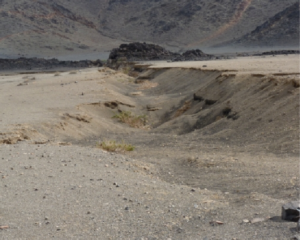
 The abstract submission deadline for EGU 2020 is now 1 month away – so the clock is ticking to pick a session and submit an abstract! If you still haven’t chosen which session to submit to, we are here for you! Every few days, on this blog, a different session in the general GMPV section will be highlighted. Today’s session is truly cross-disciplinary, focusing on earthquakes and seismicity. What do earthquakes have to do with geochemistry/mineralogy/petrology/volcanology you might ask? Well read on and find out…
The abstract submission deadline for EGU 2020 is now 1 month away – so the clock is ticking to pick a session and submit an abstract! If you still haven’t chosen which session to submit to, we are here for you! Every few days, on this blog, a different session in the general GMPV section will be highlighted. Today’s session is truly cross-disciplinary, focusing on earthquakes and seismicity. What do earthquakes have to do with geochemistry/mineralogy/petrology/volcanology you might ask? Well read on and find out…
The convenors of session SM6.1, cross listed under GMPV9, (Luigi Passarelli, Simone Cesca, Maria Mesimeri, Mathilde Radiguet and Francesco Maccaferri) say:
Earthquakes usually manifest as an isolated large magnitude shock followed by a flurry of smaller events that localize around the first and largest one. This type of seismic activity, named mainshock-aftershocks, represents localized ruptures along a single fault or a fault system steadily loaded elastically by long-term tectonic strain. However, not all seismicity behaves as such: at volcanoes, seismicity typically appears in form of sustained seismic activity, lasting over variable time ranges and typically accompanying fluid transfer, while in tectonic regions, there are growing examples of seismicity deviating from single mainshock-aftershocks.
The seismicity that does not conform with mainshock-aftershocks can be generally flagged as earthquake swarms or complex seismic sequences, and shows large complexity in the spatial and temporal pattern and strain energy release. Volcanic and tectonic swarms share many similarities because they primarily occur in regions rich of fluids and are triggered by transient loading processes such as fault creeping, slow slip events and magmatic/fluid intrusions. Yet, the physics behind such processes and the ultimate reasons for the occurrence of swarm-like rather than mainshock-aftershocks sequences, is still far from being fully understood. This session seeks contributions to open up a discussion on a larger and integrated perspective for studying volcanic and tectonic swarm-like seismicity, to dig in the physical processes while drawing similarities that can further progress our understanding of the physics of fluid-faulting interaction.
Does your work fit in? Or, are you just interested to learn more? Then check out more details, or submit an abstract here!
